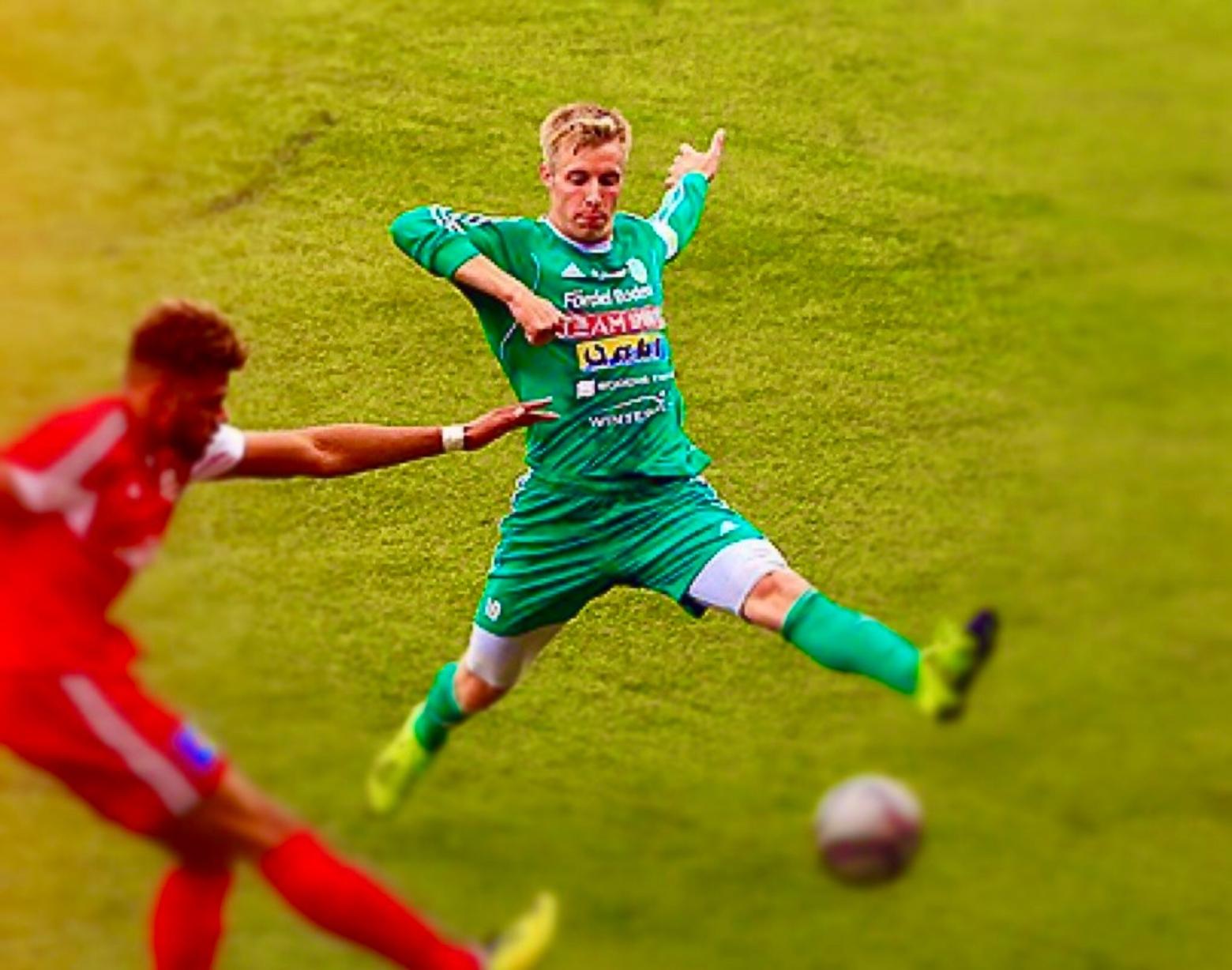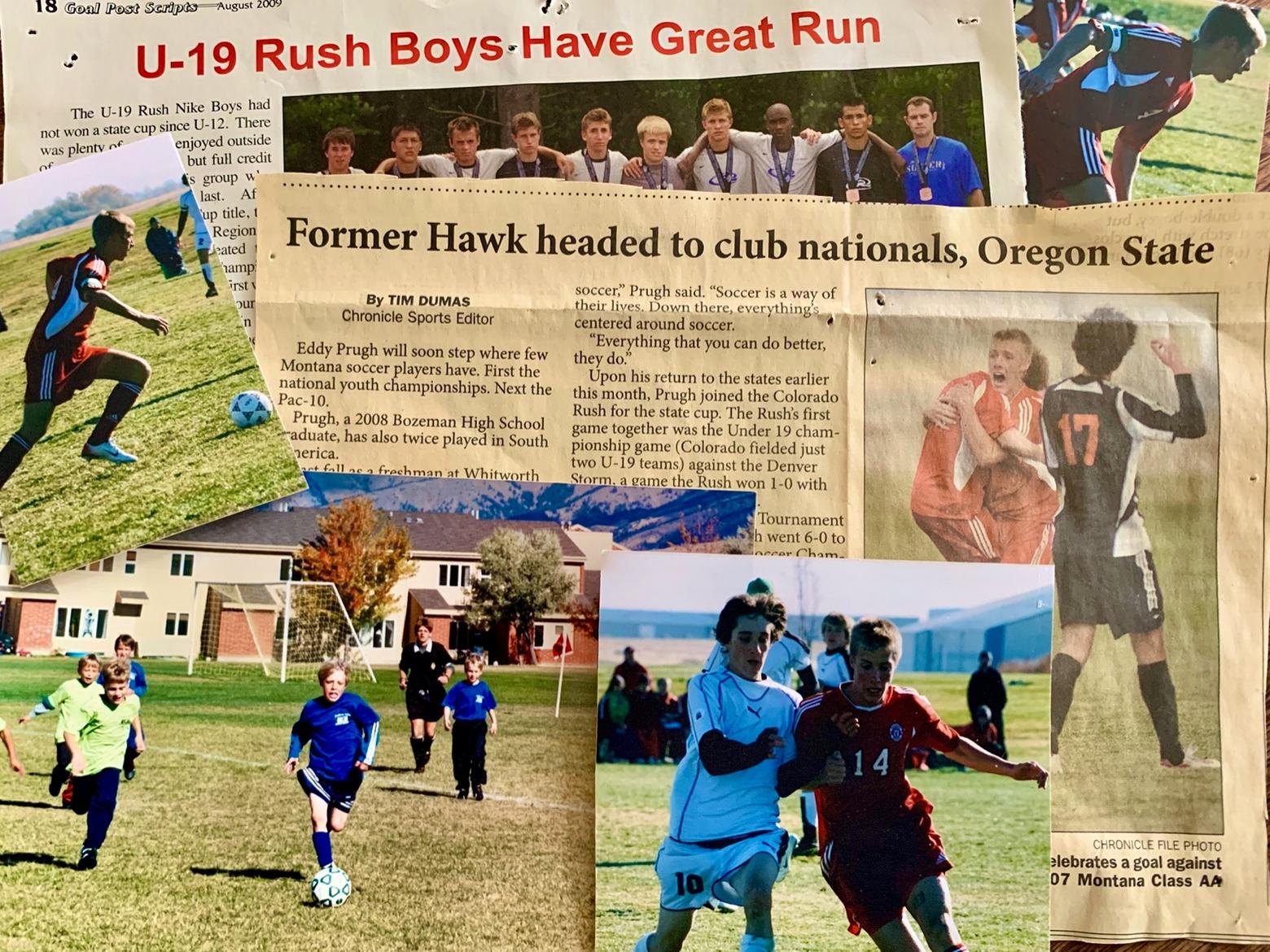Back to StoriesChasing The Dream: The Journey Of A Mountain Town Kid Taking On The Impossible
April 22, 2020
Chasing The Dream: The Journey Of A Mountain Town Kid Taking On The ImpossibleA lot of young athletes dream of breaking through to college and pro careers. Montanan Eddy Prugh blazed a trail in soccer and reflects on what it demanded
EDITOR'S NOTE: The Greater Yellowstone region, as in most of the Rocky Mountain West, is full of smallish remote towns where young athletes (and their sometimes overzealous parents) dream of kids making it big in college and pro sports. Only a few are able to realize that ambition. This is the story of just one of those—a kid who, for the region, was considered one of Bozeman's first natural prodigies. The following involves Eddy Prugh's rise as a soccer star and the challenges he faced along the way. Mountain Journal will be featuring other athletes as part of our expanding coverage of sports and how they reflect living in the region.
by Eddy Prugh
When you think of Montana you probably think mountains. You think rivers, lakes and cohabitation with rare wildlife. The land of scarcely traveled two lane highways that ribbon into the distance beneath the endless expanse of blue and white plaid that has branded the state “Big Sky Country.”
Montana is a state that proudly claims breathtaking glaciers and geysers and some of the most premier terrain for outdoor activities: fishing and kayaking in the summers, skiing and snowmobiling in the winters. Walk down any street in the state and you’ll see adventure and grit represented equally in the form Subarus with Yakima boxes and dual-cab pick up trucks with dirty mud-flaps.
But when you think of Montana, one thing you don’t think of is soccer. Football and basketball are quite at home in the Rockies—and snow sports in the mountains—but until recently soccer and hockey have always been an ugly stepchild, never fully accepted or celebrated. But if you live in or around the Bozeman area, soccer has become more and more of a staple in the community.
While growing up in Bozeman, I saw Montana produce an NFL player almost every year. Outside of skiing or rodeo, it seemed preposterous for any athlete to hone their skills to a level that would be deserving of a professional contract. Part of it has to do with the math. We don't have the sheer numbers where high competition yields better players, nor the cultural tradition nor outdoor pitches where it's possible to play year-round.
I was a soccer player in Bozeman. Practicing on the uneven ground in April rain of Gallatin Valley made the professional ranks seem so incredibly far away that they may as well have been playing on the moon. Soccer parents throughout the state drove their kids to the state tournament with silent hope that their kids would lose in the final so they wouldn’t have to travel out of state for the regional tournament.
Soccer and hockey kids in Montana, chauffeured to their games by coaches and parents, put enough miles on a car in a single year probably greater to the mileage notched by a counterpart in Los Angeles during all of their years growing up. You could easily drive 12 hours in a weekend for a couple of hours of playing time.
Soccer and hockey kids in Montana, chauffeured to their games by coaches and parents, put enough miles on a car in a single year probably greater to the mileage notched by a counterpart in Los Angeles during all of their years growing up. You could easily drive 12 hours in a weekend for a couple of hours of playing time.
It wasn’t just a financial burden for our folks; it was knowing that their kids would face teams from Washington, Arizona, California and the other soccer-crazy western states. I remember the pain of these games, lining up against professionally outfitted clubs like Colorado Nike Rush or Pateadores from San Diego.
Evident from before kickoff that the players were bigger, stronger, faster and more technical and had received coaching far superior to that of the volunteer parent that had taken the reins of the Montana team for the season (except for the days when spring skiing took precedent).
And there was a feeling when we readied for the first whistle that the players and parents from those other teams were incredulous Montana could ever field a team worthy of being their competition.
Score lines in these games were often in the ballpark of 10-0 and it was a tiny little victory to get the ball out of our own half. As a kid who wanted nothing more than to get out of Montana, these experiences left me bouncing between frustration and despair; it was starting to look more and more improbable that I would find a way out of Montana as a soccer player.
The Division II program at Montana State University-Billings was (unfortunately) starting to look like my new home. Nothing against MSU-Billings but I was aiming higher.
I felt spiteful to have grown up in Bozeman (years later I would realize what an absurd thought that was) and I wanted so badly to play for a distinguished club team, to be able to compete with the players whose reputations preceded them and were the subject of the rumor mill: “He’s going to UCLA but Stanford offered him a full-ride…I heard he was going to skip school and sign for a team in Europe!”
Ah yes, the dream. The one that meant defying the odds. Doing what many thought was impossible.
The most epic struggle of my high school years was attempting to get recruited by a college team outside of Montana. Playing Division I soccer had always been the dream but from the emails I sent to nearly every program in the western United States, I didn’t receive a single one in return.
The most epic struggle of my high school years was attempting to get recruited by a college team outside of Montana. Playing Division I soccer had always been the dream but from the emails I sent to nearly every program in the western United States, I didn’t receive a single one in return.
It wasn’t a shock; I had looked over the rosters of hundreds of programs near and far and didn’t see a single name from Montana. I had to accept that the widely accepted theory that there were no talented soccer players in Montana was always going to make my efforts an uphill battle. The solution was this: go to a tournament in another state and be a guest player on a team from somewhere else—to have your playing observed fresh by a scout whose first impression wasn’t that you came from here.
My senior year I travelled to Portland after being accepted by a team from Eugene, Oregon. I would play in three games at a showcase tournament in desperate hope of catching the eye of a college coach. It worked. It wasn’t my ideal situation, going to a Division III school in Spokane, Washington, but at least I had made it out of Montana.
Soccer in the Treasure State has come a long way since those years, especially in my hometown of Bozeman. Club teams now routinely travel out of state and hold their own against the powerhouses of the Western Region.
A handful of professionals (men and women) have emerged from the bumpy fields of Gallatin Valley and have gone on to walk out of tunnels in stadiums throughout the country and even parts of Europe.
In 2017, Bozeman native Sam Werner played in the NCAA Division I College Cup Final for Stanford against Indiana University. He scored the game-winning goal in double overtime. In the post-game interview he acknowledged the incredible journey by saying, “It feels great, just being a kid from Montana, to come and do this, it feels incredible.”
Another player, Averie Collins, played on the Stanford Cardinal NCAA champion women’s team, then in 2019 she helped lead Washington State deep into the post-season playoffs. After her final season at WSU she was drafted 17th overall by the Washington Spirit in the National Women’s Soccer League. Closer to my era than Werner and Collins are Allie Wisner and Zac Lubin. Wisner, a graduate of Bozeman Senior High School in 2009, went on to play professionally in the NWSL for the Orlando Pride before signing with Japanese team Takatsuki Speranza FC.
Since retiring from the professional ranks she has become the assistant coach for the women’s soccer team at her alma mater, University of Utah. Lubin, a Bozeman native and goalkeeper, is still active and has had a successful career abroad in Sweden as well as in the United Soccer League, the second tier of American soccer. He is currently under contract with Phoenix Rising FC.
Making the jump to college teams is happening with more and more consistency for the once hopeless soccer kids of Montana, Wyoming and Idaho. Ten years ago it seemed astronomical, but I think it’s safe to say that soccer in greater Big Sky Country is here to stay. Was the effort worth it? I’ll write about that next.




